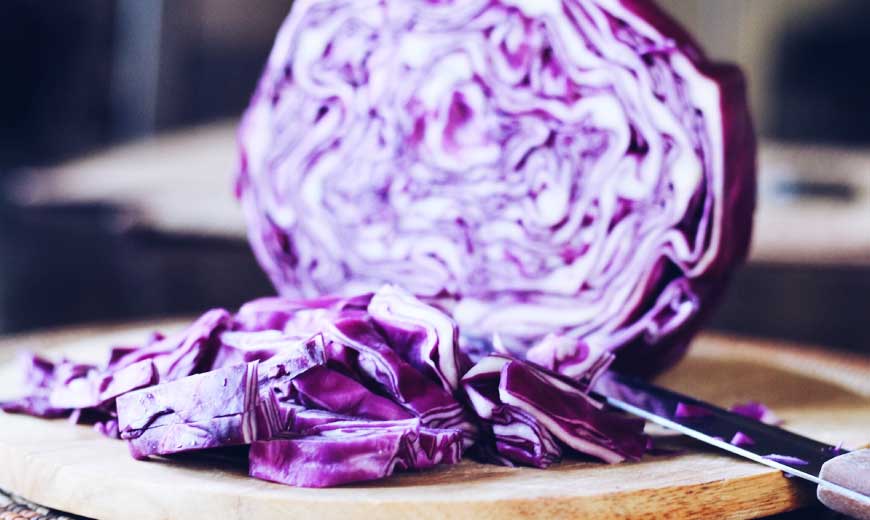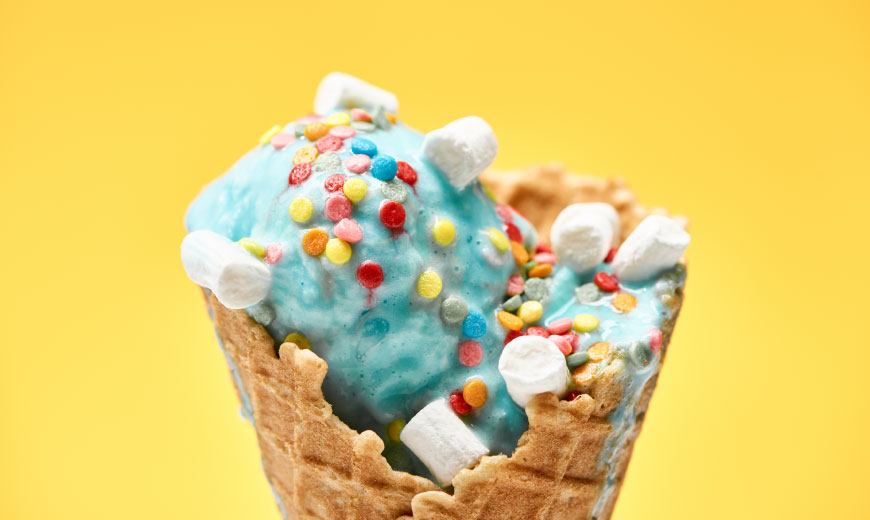An international team of researchers has discovered a cyan blue (bright) dye that is naturally derived from the pigments of red cabbage and, once it is proven safe for edible use, will be the best alternative to artificial dyes such as FD&C Blue No. 1, the industry standard.
“Blues are very rare in nature. In fact, many are actually reds and purples,” explains Pamela Denish, a chemist at the University of California (UC) at Davis and lead author of the study to be published this Wednesday in Science Advances. But having the right blue is also important for achieving other colors, such as green, because “without the right blue, mixtures produce cloudy, brownish colors,” adds Justin Siegel, a professor in UC’s Department of Chemistry and co-author of the research.
This study was carried out with red cabbage extracts, which are widely used as a source of natural food coloring, the well-known anthocyanins, which are mainly red and purple in color. In this type of cabbage, the natural blue is only found in small quantities and is too violet to replace the artificial dye.

Therefore, for the past decade, a team led by scientists from the Mars Advanced Research Institute and Mars Wrigley Science and Technology, in collaboration with the UC Davis Innovation Institute for Food and Health, Ohio State University, Nagoya University (Japan), the University of Avignon (France) and SISSA University (Italy), has been working to isolate a blue anthocyanin from red cabbage.
The researchers of the now-published study, which also involved chemists from the Autonomous University of Barcelona (UAB), Pamela Denish, graduate students Kathryn Guggenheim and Mary Riley, and Justin Siegel, have discovered a way to turn other anthocyanins in cabbage into a blue compound.

Blue ice cream developed with the new pigment. Photo: Rebecca Robbins, Mars Wrigley Global Innovation Center.
This groundbreaking dye has been achieved thanks to an enzyme that transforms a series of anthocyanins into one with a precise blue color, which remains very stable over time and can also produce better green colors than those derived from existing natural blue dyes.
To do so, the scientists screened millions of enzymes for candidates that could perform the trick and tested a small number in the lab. Based on these results, and using computational methods, they searched for a huge number of possible protein sequences (10 to the power of 20, more than the number of stars in the universe) to design an enzyme that would perform the conversion most efficiently.
With this enzyme (P2), they were able to convert the blue anthocyanin from a tiny fraction of red cabbage extract into a primary product, which allowed the Institute’s researchers and other collaborators to classify the new dye for production in sufficient quantities for its use in the food industry.
The study proved that the P2 solution produced the desired color and that, in addition, the dye obtained had the necessary stability and, compared to other natural dyes, its color only decreased by 14% in sugar syrup for 55 days. Also, it showed the ability of the dye to create blue and green colors in various food and confectionery products, where it also showed excellent stability for 30 days when stored at room temperature.
The authors explain that toxicity studies are needed to define the limitations in the use of the new dye and food safety precautions, which will require further research. However, Siegel and Denish have already founded PeakB, a start-up company that will develop this technology for commercial applications.









